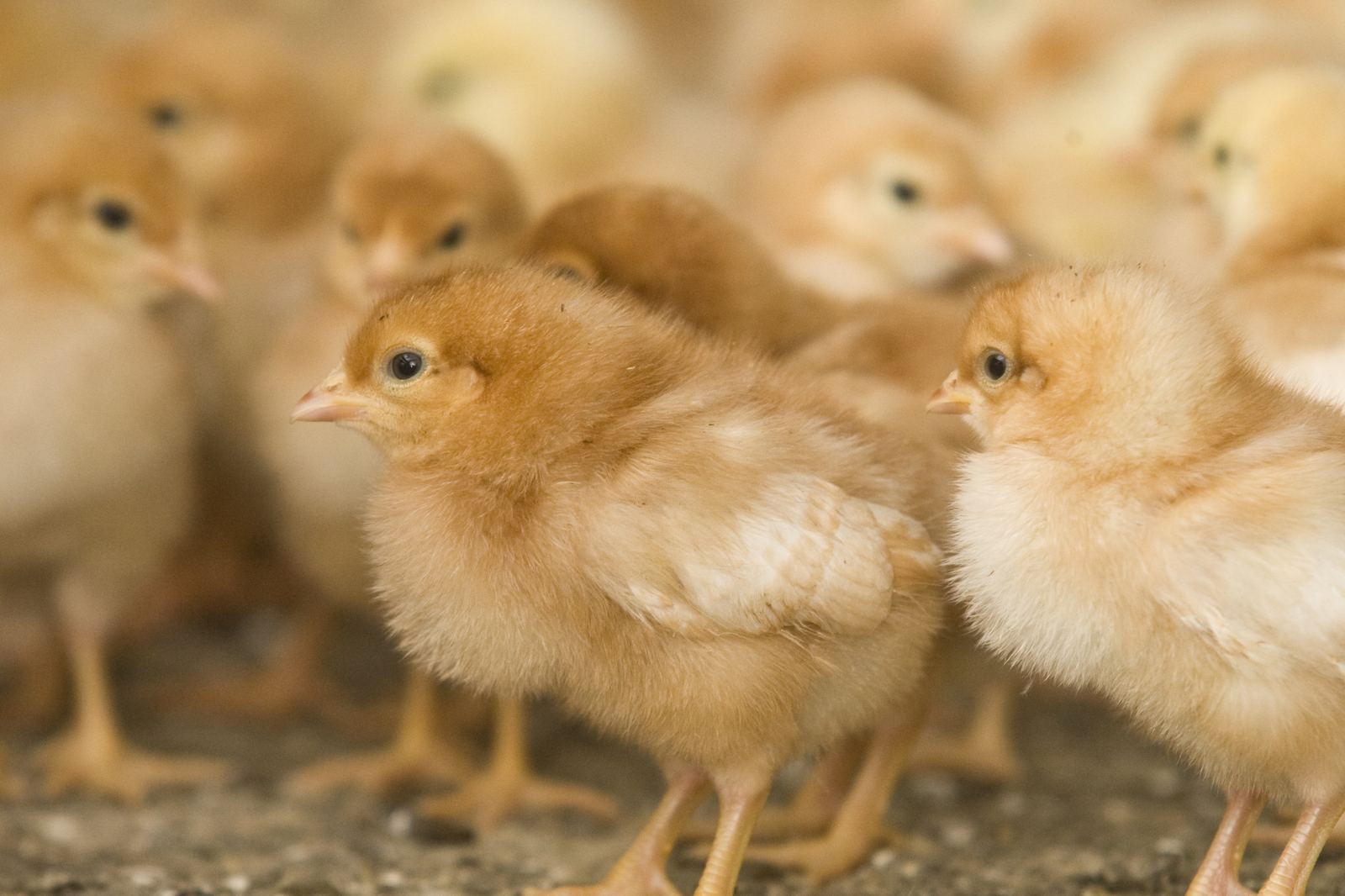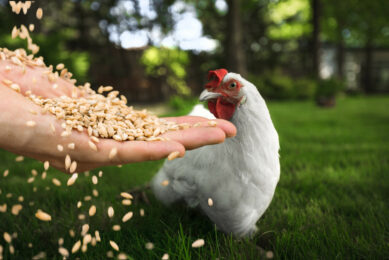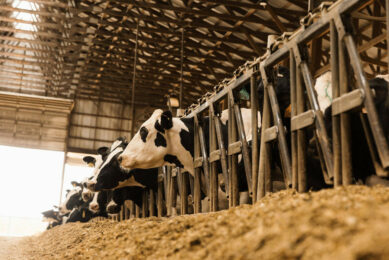Optimising intestinal health with butyrate

In the continuously developing poultry industry, butyric acid has a key role to play in boosting gut health. Butyrate based products have proven their efficiency and become a standard in modern animal production.
Modern poultry production has undergone dramatic changes over the last 50-60 years. Genetic selection for high growth rates as well as improved management and nutrition strategies, have led to increased performance standards. However, in the near future, animal performance could reach the ceiling due to genetic and physiological limits. As the intestine is the most important organ to convert feed into meat, it is no secret that ‘gut health’ has entered the collective consciousness and has become the standard of animal industry and research.
Butyric acid’s role in the gut
A lot of research has been conducted to identify the role of the gut: risk factors, as well as some key molecules supporting intestinal health, have been determined. A key molecule boosting gut health is butyric acid. Butyric acid (C4) is a short chain fatty acid (SCFA) with a biological role consistently present in the intestinal ecosystem, as it is naturally produced by fermentation of polysaccharides by the intestinal microbiota. The role of butyric acid in the gut can be briefly summarised by the following actions: promotion of the intestinal barrier, modulation of the immune system, balancing the intestinal flora and improving digestion and absorption of nutrients, leading to enhanced performance in animal production. These actions meet the three well described pillars of gut health: intestinal lining, immunity and microbiota.
1. Promotion of the intestinal barrier by butyric acid
Several studies have indicated that butyrate increases the epithelial cell proliferation and differentiation on the one hand and inhibits epithelial apoptosis on the other, resulting in longer villi. Butyric acid is the main energy source for the colonocytes. Entero-endocrine L-cells, part of the intestinal lining, react to butyrate by GLP-1/2 (glucagon like peptide) secretion, regulating different (extra-)intestinal physiological processes, like villi growth (see Figure 1) over the entire GI tract, insulin secretion, nutrient absorption, etc. Second, butyrate regulates the assembly of tight junctions, resulting in a stronger intestinal barrier.
Figure 1 – Histological evaluation of jejunum of 39 day old Ross 308 broiler supplemented with a butyrate based product* (0-39days), resulting in significantly longer villi.

2. Modulation of the immune system
The immune system is one of the most crucial and complex systems of the body. On one hand, it has to protect the animal against harmful invaders, but on the other hand, an overreaction of this system implies a waste of nutrients, which will reflect on performance results. One ingredient which has the ability to direct the immune system to a status of protection and not overreaction is butyrate. Butyrate is known to stimulate the specific (acquired) immunity by T-helper 2 stimulation and to prevent the non-specific (innate) immunity from overreacting by T-helper 1 inhibition. T-helper 1 inhibition by butyrate is established through decreased secretion of the pro-inflammatory mediator, IL-12, by the antigen stimulated macrophage. On top of this, butyrate has the ability to induce colonic regulatory T- (Treg) cells which have a central role in the suppression of inflammatory responses. Butyrate is also known for inducing an early maturation of the immune system of young chickens (Figure 2), as the gut associated lymphoid (GALT) tissue is only to be considered as mature starting from day 21 of age.
Figure 2 – Immunohistochemical evaluation of CD3+ T-lymphocytes of jejunum of 14 day old Ross 308 broiler supplemented with a butyrate based product* (p<0.05), showing the early colonisation of the intestine by a significantly higher presence of cd3+ lymphocytes at young age compared to a non-supplemented group.>

3. Balancing the intestinal flora
One of the characteristics of a healthy gut is defined by a well-balanced microbiota. Professor Collett, Georgia State University, has developed a programme ‘how to maintain a healthy gut’, which is based on three pillars: Seed, weed, and feed. Seed the gut with favourable organisms, weed out the undesired pathogens, and feed the favourable intestinal microflora to ensure rapid domination. Butyric acid plays a central role in this programme. Butyric acid is produced by fermentation by the beneficial microflora, for example by Clostridial cluster IV, XVI and XIVa&b, starting from carbohydrates entering the gut. The caecum is predominantly colonised by Clostridiaceae. Natural production of butyrate is established in the large intestine. The mucosa associated microbial community consists of butyrate producing microflora, mucin degrading bacteria, Enterobacteriacea and Clostridia: it is no coincidence that butyrate production appears in the proximity of epithelial cells and in close association with invading and histotoxic pathogens. Butyrate has a specific action against Salmonella as it decreases HilA and InvF expression, both regulators of the Salmonella Pathogenicity Island-1, decreasing the attachment to and invasion of the epithelial cell lining. Lesion induction in the case of Necrotic enteritis linked to a Clostridium perfringens infection is also inhibited by butyrate.
4. Improving digestion and absorption of nutrients
Efficient nutrient digestion and absorption is the key for an optimal performance. The final step in digestion of dietary carbohydrates and proteins occurs right on top of small intestinal enterocytes. The enzymes responsible for this terminal stage of digestion are tethered in the plasma membrane of the enterocyte, composed of numerous microvilli which extend from the cell and constitute the ‘brush border’. Hence, the enzymes embedded in those microvilli are referred to as brush border enzymes. As butyrate stimulates villi growth, this brush border will be expanded and enzyme activity will be enhanced. Apart from that, the absorptive surface will be enlarged and nutrients will be absorbed efficiently.
Butyric acid in animal production
Butyric acid as such cannot be supplemented to animal feed due to its volatility and pungent odour. Solutions were developed by the industry: supplementation of coated salts of butyric acid, butyrate, became a standard. Impextraco has recently focused its research on gut health management. During this research other ingredients, for example specific acid salts and natural extracts, have proven to interact synergistically with butyrate and are thus enhancing the action of butyrate. Two new butyrate based products were developed: Butifour F for poultry and Butifour NF for non-poultry. Both products were formulated according to species specific needs, containing natural extracts and some salts of organic acids including butyric acid. Butyrate based products enhance production performances through better gut health (see Figure 3). Species specific effects include better eggshell quality and enhanced laying rate in layers, more day old chicks in breeders, less post-weaning diarrhoea and related mortality in piglets. Overall, less problems caused by Salmonella or Clostridium perfringens have also been documented. To conclude, butyrate based products enhance production performances of animals due to a butyrate induced optimised gut health.
Figure 3 – Positive effect of a butyrate based product*, (*p<0.05), on piglet performance. piglets were supplemented with the product from weaning until 65 days of age at 1500 (prestarter) to 750 grams per ton of feed (starter).>

References available upon request.











